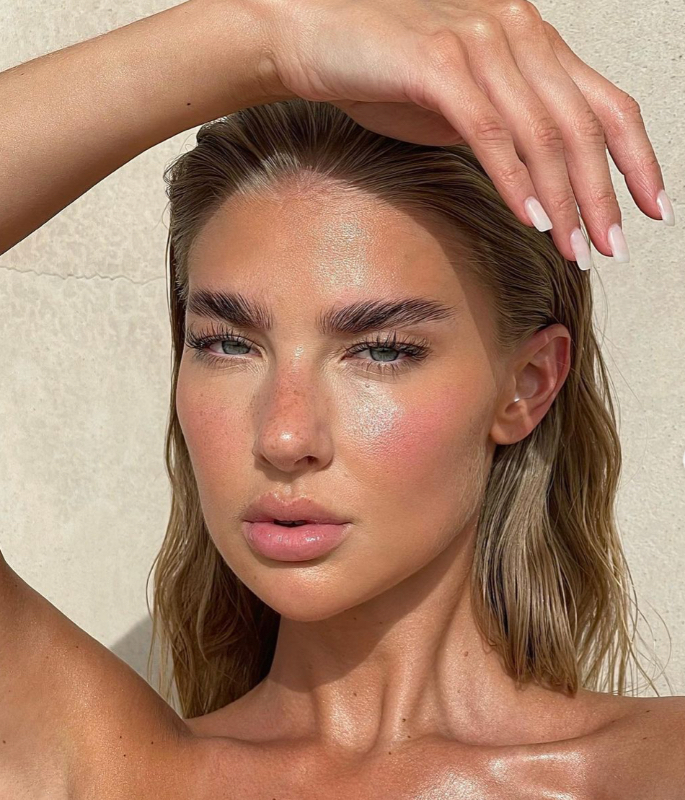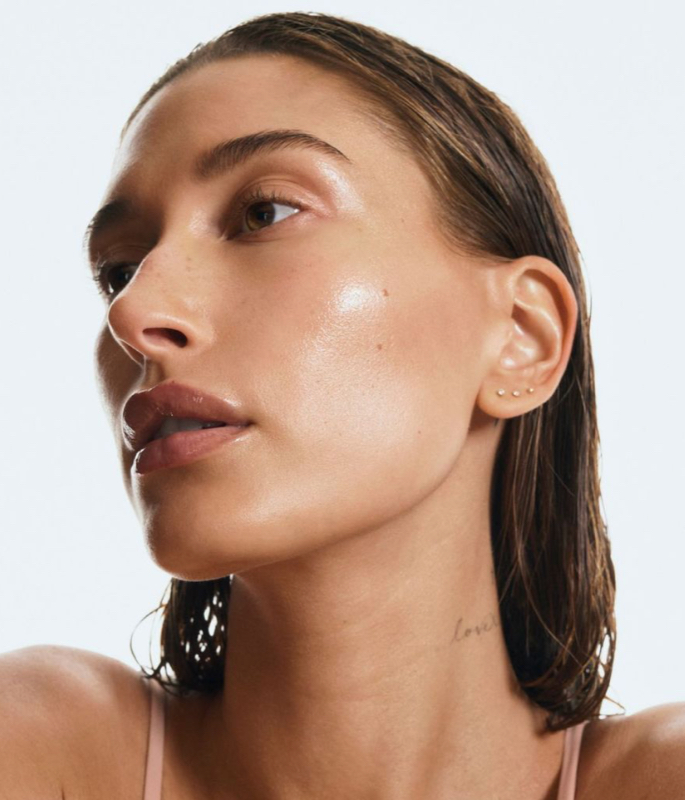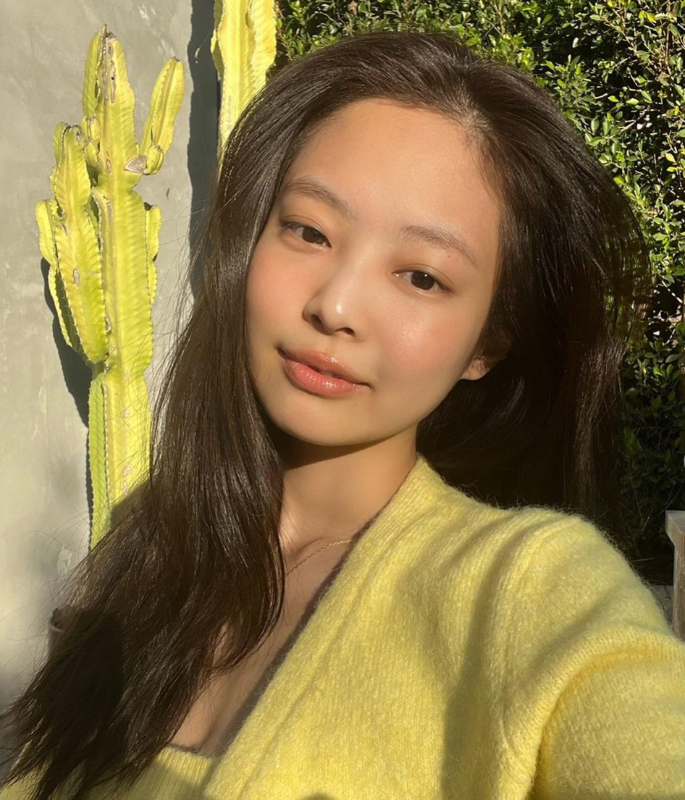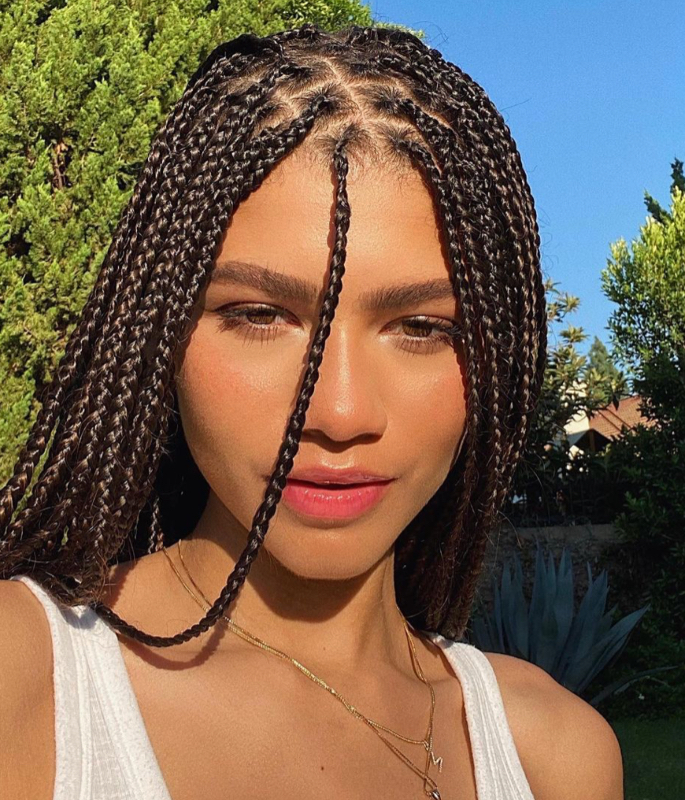Is the Desi woman the original clean girl?
Beauty trends come and go but a recent craze, the ‘clean girl’ look has been taking social media by storm.
The trend has been popularised on platforms like TikTok and Instagram with users adopting its ‘minimalistic’ aspects.
Whilst the look should be accessible to all, TikTokers and celebrities at the forefront of this trend have predominantly been White.
Celebrities like Hailey Bieber, Kendall Jenner and Bella Hadid have all become faces of this trend.
Individuals have taken to social media to share their concerns over the Eurocentric popularisation of the clean girl look.
They have expressed contempt at the failure to acknowledge or pay homage to the cultural origins and practices associated with the clean girl look – a look originated by many Latina, Black, and Brown women.
Many aspects described in the clean girl look are ancient Desi practices.
Whilst they appear seemingly new to this trend, for Desi women they are generational practices of their everyday life.
DESIblitz looks at the correlation between the trending clean girl look and the age-old beauty practices used by South Asian women for centuries.
What is the Clean Girl Look?

Whilst the focus of the trend relies on the sleek, clean beauty image, its aesthetic extends to various lifestyle choices.
Choices incorporated within this look include new-age practices like yoga and meditation.
These practices, which have a rich cultural history, remain unacknowledged by those adopting the clean girl look.
The clean girl look comprises a slicked-back hairstyle, dewy and natural-looking skin, glossy lips, and minimal makeup. It cultivates an image that is pristine, effortless, and chic.
The clean girl look is dissimilar to the age-old ‘no makeup’ makeup look which has been a consistent contemporary trend.
The ultimate clean girl is spiritual and self-aware. They wake up early, work out and eat a healthy breakfast. They wear minimalistic clothing, punctuated by gold accented jewellery.
The global online beauty brand, BeautyBay defines the clean girl look as: “The effortless look that requires effort, but the results are oh so chic.”
The look orbits around its effortless minimalist vibe, wellness, skincare and maintaining a healthy lifestyle. But where do these qualities originate?
The Original Clean Girl

TikTok is full of tutorials explaining how to achieve the clean girl look, yet many of the videos fail to acknowledge the popularity of practices involved before social media.
Though TikTok and Instagram hold Eurocentric presentations of this aesthetic, its aspects are routine practices for Brown, Black and Latina women who have long-since been originators of its features.
Black, Brown and Latina women across the globe have been used as a blueprint for the clean girl look.
They have been sporting the look for decades as a way to present an image that opposes negative stereotypes surrounding their appearance that stem from racist views.
In Desi culture, the slicked-back hairstyle, yoga practices, gold jewellery and turmeric lattes are cultural staples.
These practices and aspects have been part of daily life for Desi women since they were children. This begs the question, is the Desi woman the original clean girl?
Slicked-Back Hairstyles

Following centuries of hair oiling or ‘thel maalish’ as it is known to many in the community, Desi women are familiar with its extensive health benefits.
Some of these benefits include hair hydration, strengthening of hair follicles, adding softness to the hair and hair growth.
In many South Asian cultures, it is a staple ritual within the household.
Hair oiling stems from ancient Ayurveda. It involves the pouring of oil into the hair and massaging it into the scalp, helping to nourish and replenish it.
Not only is it a practice with a rich tradition but it is a practice that has newfound prominence within a mainstream culture like the clean girl look and has featured in popular television shows like Bridgerton.
The hit Netflix show has amassed great popularity, with the latest season featuring two British Asian actresses, Simone Ashley and Charithra Chandran who play sisters, Kate and Edwina Sharma.
In the previously mentioned scene, Kate is seen to be massaging hair oil into her sister, Edwina’s scalp. The ritual is presented as a home comfort.
However, some TikTokers have expressed their outrage at the hypocrisy of the practice.
Bangladeshi American TikToker, Mohuya Khan (@layrinthave) has expressed her distaste for the clean girl look in a TikTok video where she states:
“Brown people have always been seen as dirty but when a white girl does it, it’s suddenly a trend and seen as a clean girl aesthetic.”
Mohuya’s video clearly expresses the indignation she and many other women share towards the gentrification of cultural practices in this trend.
Comments on the video by other women mirror her discontent, with netizens sharing their experiences of bullying after hair oiling.
One comment stated: “When I was in school people used to tell me my hair was greasy every day.”
Another netizen added: “I stopped using oil in my hair because people called me greasy.”
For years, Desi women have been mocked for putting oil in their hair and wearing slicked-back hairstyles. However, with the newfound clean girl aesthetic, hair oiling and slicked-back hairstyles are in vogue.
Original Practitioners of Yoga

Therefore, a workout involving relaxation and flexibility like yoga is a preferred practice involved in the clean girl look.
Yoga has sparked intense popularity for the clean girl look. For some, it has become a new way of life. For others, yoga is part of their heritage and is a long-time cultural practice.
Its roots are of South Asian origin and are based on a philosophy that welcomes anyone and everyone to participate and practice it.
Its introduction to Western teaching dates to the mid-nineteenth century when it strayed from its spiritual roots and became highly focused on the physical benefits.
Anodea Judith, a leading authority on the chakra system, describes yoga’s benefits in her novel Eastern Body Western Mind:
“Practicing yoga promotes relaxation and flexibility, softly dissolving blocks that bind tension.”
Judith, who holds a PhD in health and human services, describes the key aspects, “relaxation and flexibility” which align with the core principles of the clean girl look that designate a healthy lifestyle.
However, the assimilation of yoga as a key aspect of the clean girl look portrays an exclusive image of who can and cannot practice the regime.
The clean girl look holds a rigid image of well-toned and flexible women who are involved in this practice of yoga which goes directly against the original philosophy of the practice which promotes inclusivity.
Gold Jewellery

Whether it is a pair of simple hoops or meticulously selected rings adorning each finger, gold jewellery is sure to complete the look.
However, gold jewellery complimenting a minimalistic look is no new revelation.
The relationship between gold jewellery and Desi culture traces back thousands of years.
In ancient India wearing gold was not only a sign of wealth but happiness and purity. Its abundance has an extreme material value as well as great auspicious value in Desi culture.
When asked about her relationship with gold jewellery, Aashika Mistry, a 24-year-old woman said:
“For me, gold jewellery has always been a symbol of hard work.”
“Seeing my grandma wear gold jewellery showed me how jewellery and appearance had meaning growing up as a South Asian in the west.”
This viewpoint is shared by other Desi women as reported by BBC News when they interviewed jewellery designer, Anisha Parmar who said:
“The precious metal tells the stories of South Asians and their journeys to the United Kingdom.”
Whilst gold accents are fashion statements for partakers of the clean girl look, for Desi women it is apparent there is a much deeper meaning to this practice rather than aspects of a trend.
Why is the Clean Girl Look a Problematic Trend?

Its promotion on TikTok associates flawless, unblemished skin with cleanliness.
These factors disregard the discolouration, hyperpigmentation and scarring which are prone to people with darker skin tones.
The clean girl look invites issues due to the misleading beauty standards it presents with clean equating to fair and unpigmented skin.
Though the clean girl look is widespread and revered, there has no doubt been discontent on social media amongst Desi women who feel the trend is not inclusive.
These women feel that aspects of their lives have been capitalised on.
Whilst appreciating other cultures through fashion or beauty is commendable, Desi women on TikTok have called for an acknowledgement of the culture that is being shared, rather than the capitalisation of it.
So what can be done to ensure inclusivity within beauty trends such as the clean girl look?
Whilst Desi culture does not have ownership of the trend, there should certainly be a claim of acknowledgement concerning the plight Desi women have faced in their original practice.
Acknowledgement is key in ensuring the trending space on social media remains an inclusive and safe space for all.
The impact Desi beauty practices have had on the clean girl look is extensive.
Therefore, credit and better understanding are key when approaching contemporary trends on social media.
It is safe to say the clean girl look is great for those who wish to maintain that effortless, chic image.
It is not however a solely new trend. It holds culture and history, and above all traits which deserve recognition.





























































